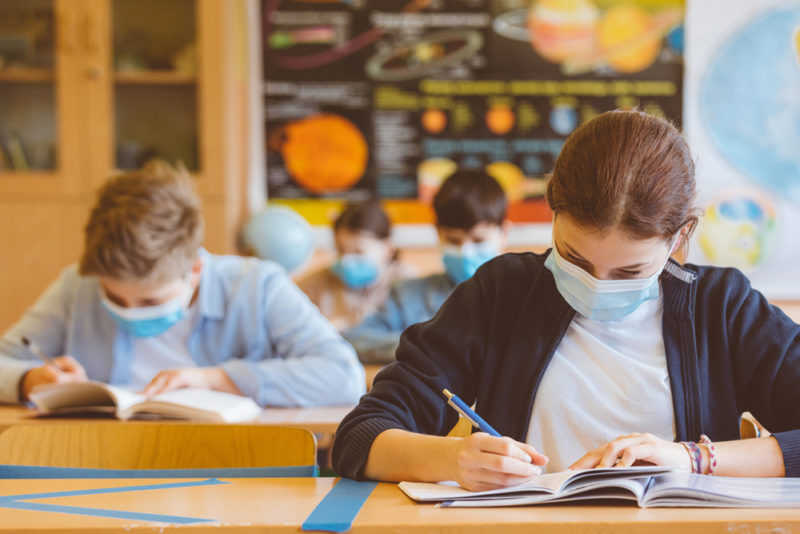Without a clear singular origin but with roots in Hinduism, Buddhism – even Judaism, Christianity, and Islam – the practice of mindfulness, with its themes of anti-materialism, inner peace, and self-realization, has been around for over two thousand years.
You might think of mindfulness as tied to yoga and Buddhism, but when it is incorporated into classroom practices without religious connotation, it fits more into Western secularism. On this note, mindfulness meditation is now implemented by doctors for patients with cancer, depression, PTSD, and other issues. Even the U.S. military is reaping the benefits of inner peace.
Why will mindfulness help me?
Research shows that mindfulness meditation can change your life. It helps people sleep better, feel more sure of their goals, delay the aging process, improve digestion, manage anger, feel more empathetic, and communicate better with parents, friends, and partners. Mindfulness (and staying organized) alleviate burnout and stress that educators and administrators can face.
How do I start practicing mindfulness?
Mindfulness can be a focus of meditation or of moments in daily life. To meditate, find a quiet, comfortable space and adopt a relaxed position for your body – one where you are not bothered by aches and pains or odd angles. Deep breathing alleviates the background noise of your thoughts and calms the instinctual part of your brain that is wary of threats. You are already controlling how your body reacts to stress.
Next, try to be aware of negative feelings and accept them. Let the emotions pass without changing your mood. Authors Dr. Kirk Strosahl and Dr. Patricia Robinson write that “acceptance of emotion without the need to react… triggers parasympathetic nervous system activation, which… reduces the activity of the arousal centers of the limbic system.” They add that compassion is another important factor:
“Compassion-based mindfulness practice increases the density of gray matter in certain areas of the brain… involved in learning and memory processes, as well as emotional control, self-awareness, and perspective taking… It also appears that the experience of compassion for oneself and others strengthens neural circuitry responsible for regulating the activity of the amygdala, the brain center involved in producing negative emotions.”
If you have trouble clearing your mind, try guided meditation or techniques such as imagining positive scenarios or saying affirmations for yourself and others like, “may I be healthy, happy, and successful.”
You might find everyday mindfulness easier. The next time you are completing a task while thinking of 10 other things, from what you will have for dinner to how your cousin is doing, step on the brakes. You may think you are multitasking and staying ahead, but you are actually doing yourself a disservice. In this moment, pay attention to what is in front of you and within you. What are you feeling under all the noise? How does your environment look at this time of day? What do objects feel like in your hands? As you focus on breathing, your heart rate will lower and you will find yourself having more control over your day. You will notice new details and get in touch with your body, which is busy with a million quiet, unconscious regulatory functions.
How does mindfulness help students?
When teachers encourage students to pause, pay attention, and be curious and kind, mindfulness practice reduces issues related to bullying, test anxiety, and thoughts of suicide. Stress reduction even improves students’ memory.
In New York City, training that incorporated mindfulness techniques made teachers “behave differently in the classroom—smiling more, asking more questions, remaining curious about student misbehavior rather than moving toward punishment… [de-escalating] encounters with students when annoyed.” Check out The Atlantic’s description of real-life classroom application of mindfulness meditation.
A UC Davis research team working with Mindful Schools found that mindfulness practice at three elementary schools in Oakland “improved students’ behavior and ability to focus, as well as teachers’ sense of well-being,” though not many long-term studies (with conclusions such as how mindfulness affects test scores) have been conducted.
Nonprofit services like MindUP and Mindful Schools facilitate the rise of mindfulness practice in schools by offering courses and certifications for educators, administrators, and other professionals. Whether you choose to use these services or individually promote meditation in the classroom… may you be healthy, happy, and successful.

































